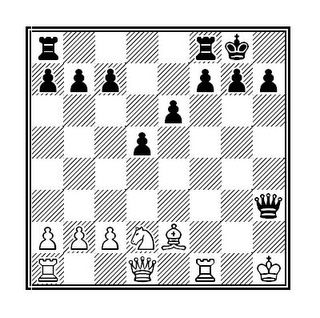Tactics
Well... I am on the wagon -- the band wagon. I purchased a couple programs (and also found this really cool "Chess Tactics Server" website) that focuses entirely on chess tactics. My goal is to work through at least 50 problems a day for the next month and see if it has any effect on my chess playing skills.
I am not looking for a jump in my ratings, but I'll be disappointed if my ratings do not improve.
So far I find the studying fairly interesting. I was afraid I would grow bored with it too quickly (and not meet my 50 problems a day in 30 day goal). But after dedicating a full half hour to studying yesterday, I finally went to bed an hour and fifteen minutes later . . . . and only because it was after midnight and I had work the next day. ("One more problem.... just one more....."). Even tonight, I am going out with some of my friends, and I am worrying if I am going to have enough time to spend plugging through the various tactical problems on my computer. Am I a loser? Unquestionably. Am I getting better at chess? I don't know.
I am debating on whether I should play any games until the 30 days are over. Part of me thinks it would be a good idea to do so (it never hurts to play, right?), but I was wondering if it might just distract me from the general tactical abilities I am trying to learn. Chess is 99% tactics . . . . or so someone said. Will that extra 1% of "everything else" just distract me?
Instead of playing, I was going to spend some more time working on the openings. I do well against the Sicilian (an obviously popular choice for my black opponents), but I feel like my knowledge of the opening is virtually nil. It seems worth knowing, but at the same time it's such an ocean of information... there are whole books (many of them!) dedicated to the subtlest variaions of the Sicilian. I don't know if diving into such a large body of water is worth it.... will I drown?






